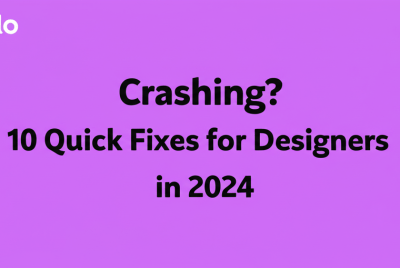According to the National Bureau of Statistics, the creative industry in Nigeria comprises the following: Media and Entertainment, Beauty and Lifestyle, Visual Arts, as well as Tourism and Hospitality.
It is the second largest employer of labor in Nigeria right after the agricultural sector and is set to reach a valuation of $15 billion in 2025 , already contributes 197.6 million dollars to the nation’s GDP and cushions the unemployment rate of 33.3 percent by employing 4.2 million Nigerans.
However the contribution of the creative industry in Nigeria could be higher when enabling environments exists; in countries like Korea, an increase in support for the creative industry has seen the film industry emerge as a leader in export in 2022 and the government will increase its financial support to 30 million Won to facilitate production of hit movies like the squid game.
Interestingly, the creative industry is the only industry requiring the least effort from the government in terms of coordinating export activities; what’s required here is the support of players in the industry and the country would witness an increase in creative products tradeable locally and internationally with minimum effort from the government. The music industry is proof of this with hit songs from Nigerian musicians like Burna Boy, wizkid and Davido consumed internationally with little to no effort from the government.
What is required is an identification of the players involved in the creative industry who create, execute, and deliver creative products to end users and how best to improve their products.
The Visual Industry In Nigeria
The visual industry comprises all fields related to the creation of visible creative materials e.g. paintings, drawings, and in digital times illustrations, photography, etc. It also includes creative materials of a physical nature such as audio content i.e. podcasts.
The industry according to a Jobberman report accounts for 4oo million dollars and employs 400,000 Nigerians. The need for digital interaction has sped up the increase in demand for visual professionals like UI designers who create digital products necessary for interactions with consumers.
The industry is also a fast-growing one with the innovation of the career called “content creators’ i.e. ‘ individuals creating video content shareable across social media and ‘ gig economy’ ‘ i.e. individuals trading creative services to small businesses without formal agreements. Omoleye Omoruyi believes this number to be at 4.2 million in Nigeria making creativity a significant employer of labor.
What Is The Value Chain Of The Visual Creative Economy In Nigeria?
Value chain here are the level of activities involved in the production of a creative product possessing economic value and its delivery to the end user. This economic value could be in the level of purchases made which are influenced by the activities of the visual community or top-of-mind awareness enjoyed by brands.
In the visual industry, the value chain can be summed as: Content planning, Manufacturing and production, Marketing and promotions. some visual creatives like script writers exist in only level of activity while others exist across all .
1. Content Planning
Content planning is the first chain in the industry where the planning of a product is done. At this stage ideas are put together and refined through research.
Professionals involved in this field include writers, illustrators for mood boards, scriptwriters, etc. At this stage, the required content is prepared for the next stage in the value chain – production.
2. Manufacturing & production:
This stage converts ideas into tangible products. Content. Graphic designers, directors of photography, Audio engineers, etc are professionals involved in this chain
3. Promotion
This value chain involves a collaboration between the visual and Marketing roles to make finished creative product available to the public. e.g copywriting a type of creative writing for marketing purposes.
How Does the Creative Value Chain Add Value to The Economy?
Creative industries create value for the economy by encouraging the purchase of goods and services which motivates the GDP of a nation.
Nigeria’s GDP is worth $477 billion and depends on the purchase of goods and services by Nigerians. When individuals and households engage in local buying, they are essentially spending money on goods and services produced within their region. This consumption contributes to the GDP as it represents a significant component of economic activity. Visual Creatives ensure products and their offerings are available to consumers and in cases like products for entertainment even trigger the need to buy these products.
Graphic designers in the food industry, for instance, spark a desire for meals through the use of colors while video content creators develop videos showcasing the benefits of products and encouraging the public to make purchases.
The stronger the skill of a creative in any of the value chains i.e. ideation, production and promotion the higher the GDP of any nation as creatives stimulate the purchase of goods and services and some like web designers play crucial roles in making digital products available.
Creatives thus form the strongest section of the marketing and sales department and are even judged on this as employers tie the value of creatives to the level of sales their activities generate.
How To Improve The Value-generating Skills Of Creatives In The Creative Industry.
Value-adding skills refer to attributes deployed by creatives to contribute to the profit margins of their workplaces. Creatives should be significant contributors to profit margins, this can be in the form of creating materials to motivate sales or materials that provide top-of-mind awareness for clients.
However, not all creatives achieve this with many creatives unable to stimulate sales and eventually experience layoffs from employers dissatisfied with their work. This i.e the inability to generate value, affects the ability of the creative economy to contribute to the country’s GDP by promoting the purchase of goods and services.
While creatives produce materials stimulating ticket sales others fail to achieve this. Here are a few reasons why
Years of exposure: Creatives like Ayobami believe value-generating skills depend on years of experience in the industry which influences creative output e.g. fliers for ticket sales. According to him, the number of years provides visual creatives with skills that achieve goals which then contribute to the bottom line of clients
Access to training: Graphic design Training and mentorships play huge roles in stimulating the progress of skills that add value to companies or clients. Visual creatives utilize training or mentorship to gain insights into areas of attention. Juliet Godwin foremost female illustrator in Nigeria claims mentorship catapulted her to the skill set possessed today
Expenses: Poor economic development means creatives in Nigeria find accessing industry tools expensive and unaffordable. Hence working with substandard materials like laptops with slower processing times rather than optimum processors for graphic design which delay the execution of creative materials.
Solution:
Mentorships, internships, and training are great ways to overcome the experience gap and catapult creatives from novices to professionals in shorter time frames. Additionally, employers can invest in training to ensure the growth of creatives who contribute significantly to profit margins.
Develop your skills and earn better in 2024
Developing a skillset is not for the benefit of the GDP alone but helps you better your output and hence a justifiable reason to charge better. Think about a creative with data demonstrating how their past projects achieved xyz amount of sales for clients in comparison to other designers. This level of demonstrable data justifies your charge and makes you desirable.
It’s not solely about the charge, there’s also the fulfillment that comes from seeing your abilities grow thus self-confidence is in question here.
Interested in blooming your skills to higher heights? Then make an effort to :
Take courses to boost your creativity: Free and paid courses exist to help you boost your creativity. These courses are online and you can learn at your own pace
attend conferences: Conferences like the NGDX 2023 were set up to allow designers to interact physically with other designers across various experience levels, gain insights, and therefore grow. Be there
LearnMarketing: Your newfound skills need to be known. Take marketing courses to help you promote your skills to a larger audience and stand a chance to work on projects you dream of.
The creative industry in Nigeria becomes better with every player at their best. Be at yours!

